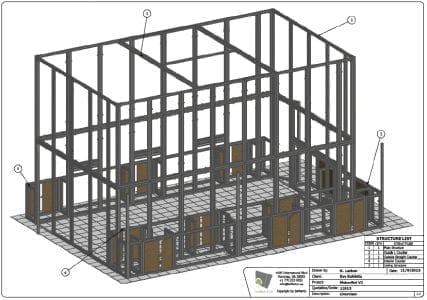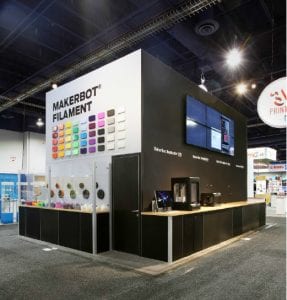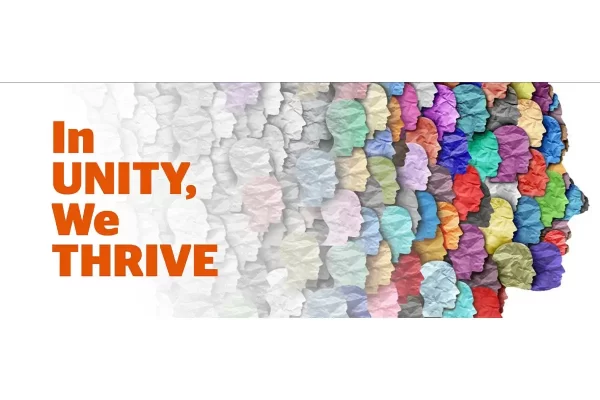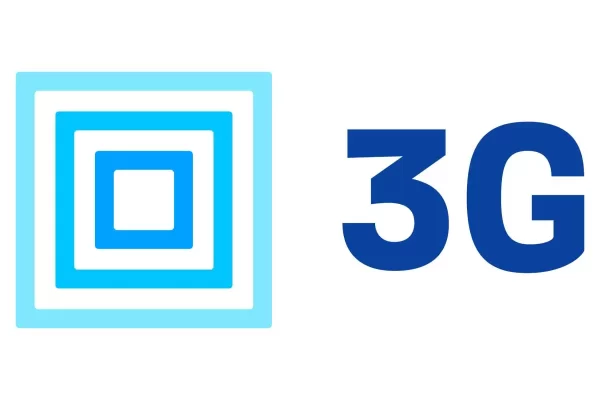When the chokehold of the downturn left pinched pockets in its wake, those who considered tradeshows a huge part of their marketing mix didn’t vacate the show floor. Instead, they firmly sought to exhibit without buying the structure.
Even though the economic climate has improved, budget constraints still exist, and exhibit rentals continue to prevail as an alternative option to buying. As a result, an exhibit house’s rental inventory and partnerships have become valuable commodities that attract and retain customers as much as the rental itself.
“The rental market continues to grow. It’s a wonderful way for the exhibit house to build bottom line profitability if working with the right rental properties,” added Robert Laarhoven, vice president of sales and partner, beMatrix USA.
|
|
|
A rage of inventories
While there are common pre-engineered structures tradeshow companies carry in their warehouses, especially if they use the same vendor, service standards and overall rental programs vary from business to business. Small-to-large exhibition companies may carry certain types of pre-engineered structures and may have to outsource or purchase other options.
Additionally, some of the largest of the large custom houses might not have the inventory of rental solutions available to them, according to Dick Wheeler, president of California-based ProExhibits.
In contrast, rentals are huge business for others serving the exhibition industry. Rentals constitute 90 percent of Michigan-based Exhibit Exchange’s operation, according to its owner, Mark Kiely.
“We doubled our inventory due to the amount of business we were awarded. It’s rare we have to build [from scratch]. Clients like the flexibility of a rental,” Kiely added. “We pick the structure and hardware and reduce the costs by two-thirds.”
For some tradeshow companies, consistently expanding their inventory allows them to invest in their customers who in turn buy their products. It’s a quid pro quo partnership that continues to work for several reasons. This is evidenced by ProExhibits, which invested $3 million in its inventory.
Different structures for different folks
Opinions differ, but many in the industry agree that exhibit rentals should only be purchased when exhibiting one-to-three times a year. Another division lies in what rental structure is best. Everyone has their reasons for purchasing certain structures from suppliers, so do the customer who ultimately rents from the exhibit house.
No matter if the structure is a portable or pop-up; modular or custom modular system; or traditional custom wood and metal, flexibility and savings is at the heart of every successful rental program. The fact is that some rentals cost more than others and perhaps have more attractive qualities than others. But of course, that also depends on the point of view.
“Rentals give companies flexibility, whether they are startups or well-established. They can exhibit at multiple venues at the same time. Once you buy a booth, you can’t go to a conflicting venue at the same time. Rentals are economical, and you can have a completely different look from year to year. You’re not stuck carrying it as an asset for five years until you pay it off. I’m not saying [rentals] are perfect for everyone, but they are the right solution for our clientele,” Kiely said.
Some exhibit houses see traditional custom wood and metal exhibits as something to be sold, not rented, due to the construction and operating costs. At the other end of the spectrum, some tradeshow companies may see this option as an investment into a major client. Agreeing with the latter option, ProExhibits invests in designing and constructing customized rentals for specific clients who use them for at least three tradeshows, according to Wheeler.
There are two types of custom rentals. The first is when the exhibit house builds and designs the structure with the intention of renting it to the customer. Also, there are pre-engineered solutions where surface colors are changed and graphics are added. This type of rental could be custom, modular or portable.
Portables or pop-ups are considered the solution for those who want less to operate, carry or install. Modular systems are popular for their configurability and lightweight aluminum that saves on drayage and operating costs. Additionally, most modular systems require no tools to put them together.
Overall, rentals are long-lasting, according to Laarhoven, who noticed the quality and durability of 10-year-old frame systems at International Manufacturing Technology Show (IMTS), held in September 2014 at McCormick Place in Chicago.
Saving time and money
“[Rentals] reduce the amount of time it takes to get to the market. Generally, pre-designed and pre-engineered solutions take under a month. However, custom-designed rental solutions require the same amount of time as a custom property,” stated Wheeler. “There is 60 percent savings over designing and building something new the [customer] would own. The client doesn’t have carrying costs. It’s all built into one flat fee.”
Managing the logistics and owning the rental property means the exhibit house is responsible for the associated expenses. But there are ways to save here as well. For example, with beMatrix being such a popular rental system, according to Laarhoven, the company has noted how easy it is for tradeshow companies to avoid transporting equipment across the U.S.
“Our customers may rent to each other. If we have a customer in Boston and they find it too costly to send their inventory to San Francisco, they may find it more cost-effective to rent frames from another exhibit house in that market.” Laarhoven explained.
He added that regional tradeshow companies may not see each other as competition like the major exhibit houses probably would.
While there are perks to renting, both financially and logistically, there may come a point where the end user prefers to own the exhibit. For these instances, companies like ProExhibits partner with third-party leasing companies and offer the leasing service to customers.
Wheeler stated that it’s possible for customers to pay off an exhibit in 12 to 60 months as well as augment what they’re buying over that time period.
Adding leasing services is another instance of the quid pro quo partnerships exhibit houses take on when investing in their relationship with customers.































